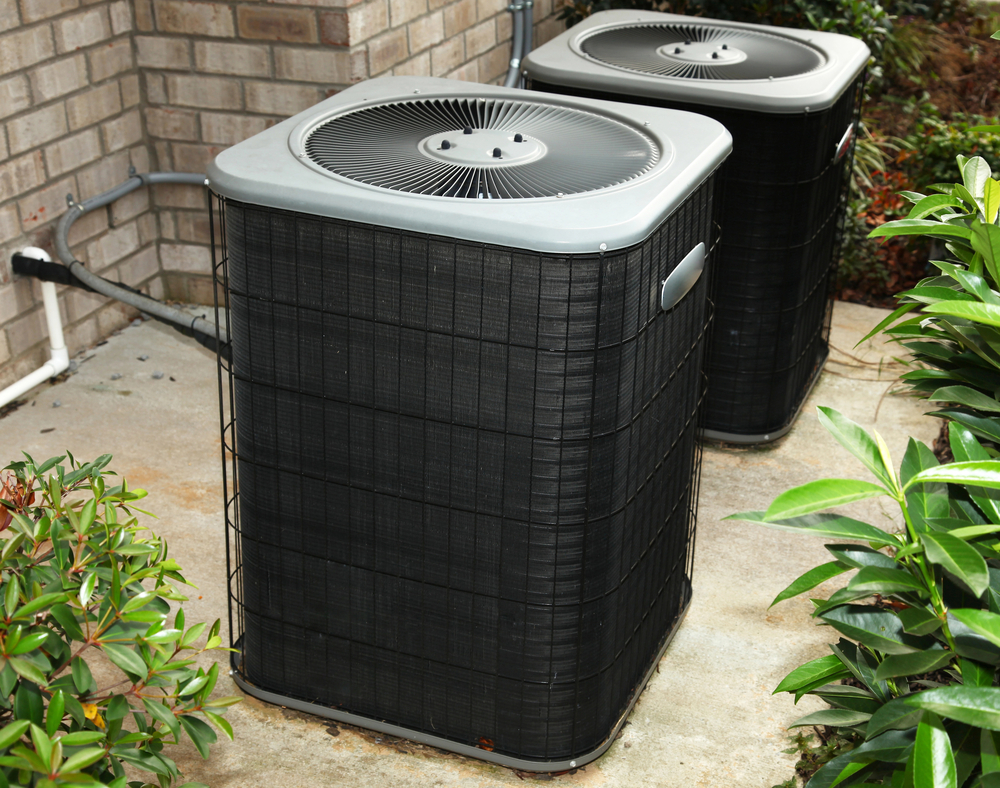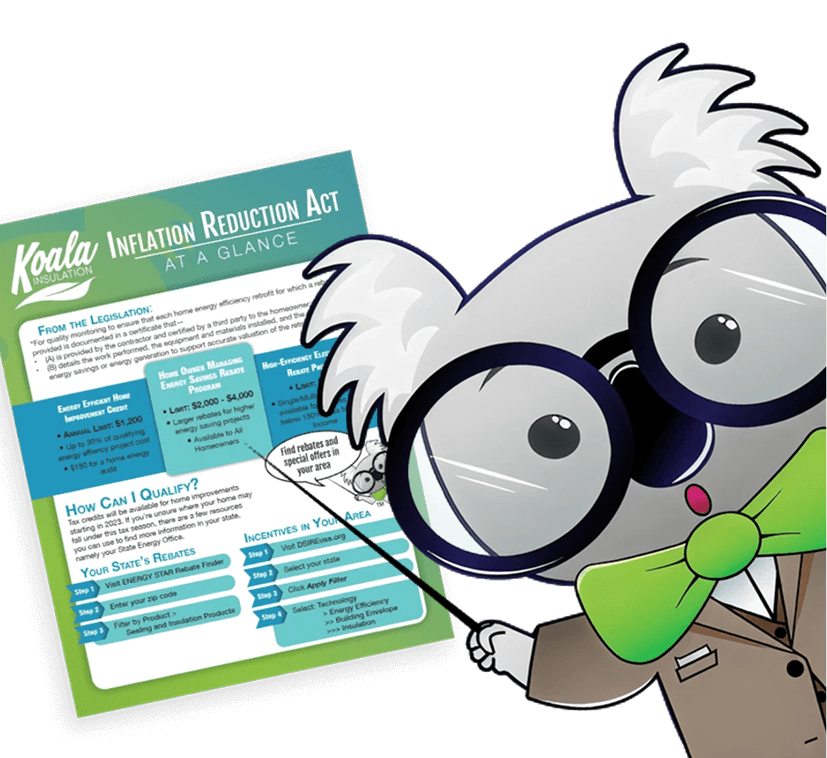Reducing Air Conditioning Costs with Effective Insulation

The scorching heat of summer can be unbearable, and the first thing we turn to is our trusty air conditioner. However, with rising energy costs, running an air conditioner can quickly become expensive. In fact, according to the Department of Energy, nearly 50% of the average household's energy bill goes towards cooling and heating costs. Fortunately, there is a solution to reduce the cost of air conditioning – effective insulation.
In this guide, we will discuss different types of insulation and how they can help reduce air conditioning costs. We will also provide tips on how to properly insulate your home and potential savings you can expect. By the end, you will have a better understanding of how insulation can save you money and help the environment. So, let's dive in!
Why Does Insulation Matter?
Insulation is the key to maintaining a comfortable and energy-efficient home. It acts as a barrier against heat transfer, keeping cool air in during the summer and preventing warm air from escaping during the winter. Without proper insulation, your air conditioner will have to work harder and longer to cool your home, resulting in higher energy bills.
In addition to reducing air conditioning costs, effective insulation also has numerous other benefits. It helps regulate the temperature in your home, making it more comfortable year-round. Insulation can also reduce noise levels, improve indoor air quality, and increase the overall value of your home.
Moreover, using insulation for energy efficiency is not only beneficial for your wallet but also for the environment. By reducing the amount of energy needed to cool your home, you are decreasing your carbon footprint and helping combat climate change.
Now that we understand the importance of insulation, let's explore the different types of insulation available and how they can help reduce air conditioning costs. Additionally, we will discuss how to determine the right type and amount of insulation for your home. With this knowledge, you can make informed decisions on how to effectively insulate your home and save on air conditioning costs. Let’s get started!
How Does Insulation Work for Air Conditioning?
Insulation works by slowing down the movement of heat from one area to another. During the summer, insulation blocks the transfer of heat from outside into your home, keeping it cooler. Conversely, during the winter, insulation prevents warm air from escaping and keeps your home warmer.
The effectiveness of insulation is measured by its R-value, which indicates its resistance to heat transfer. The higher the R-value, the better the insulation is at preventing heat flow. When it comes to air conditioning costs, you want to look for insulation with a high R-value.
Also, it's important to note that insulation is not just limited to the walls of your home. It can also be installed in attics, crawl spaces, and even around air ducts to further prevent heat transfer.
Now let's look at the different types of insulation available and how they can help reduce air conditioning costs.
Types of Insulation for Reducing Air Conditioning Costs
There are several types of insulation available, each with its own unique characteristics and benefits.
Fiberglass insulation
Fiberglass insulation is one of the most common types of insulation and has been used in homes for decades. It is made up of tiny glass fibers that are woven together to create a fluffy material. Fiberglass insulation comes in batt or roll forms and is relatively easy to install.
One of the main advantages of fiberglass insulation is its affordability. It is typically one of the least expensive types of insulation, making it accessible for many homeowners. It is also fire-resistant and does not absorb moisture, which helps prevent mold growth.
However, one drawback of fiberglass insulation is that it can irritate the skin and lungs if proper protective gear is not worn during installation. It also has a lower R-value (a measure of an insulation's thermal resistance) compared to other types of insulation, meaning it may not be as effective in extreme climates.
Cellulose insulation
Cellulose insulation is made from recycled paper products and treated with fire retardants. It is often blown into attics or walls using a special machine, making it an ideal option for hard-to-reach spaces. It has a higher R-value than fiberglass insulation and is more environmentally friendly.
One of the main advantages of cellulose insulation is its ability to fill small gaps and crevices, providing better coverage compared to other types of insulation. It is also resistant to mold and pests since it is made from treated paper fibers.
However, one drawback of cellulose insulation is that it can settle over time, reducing its effectiveness and potentially requiring reinstallation. It is also more expensive than fiberglass insulation.
Spray foam insulation
Spray foam insulation is a popular choice for both traditional homes and energy-efficient buildings. It is made from a mixture of chemicals that expand when sprayed, filling gaps, and creating an air-tight seal. This type of insulation has a high R-value and can effectively reduce air conditioning costs.
One of the main advantages of spray foam insulation is its versatility. It can be used in various areas of a home, from walls to attics to crawl spaces, and is ideal for irregularly shaped or hard-to-reach spaces. It also has excellent moisture resistance, making it a great option for humid climates. Additionally, spray foam insulation can also act as a sound barrier, reducing noise levels from outside.
However, spray foam insulation is one of the most expensive types of insulation and should only be installed by professionals due to the chemicals involved. It also has a higher environmental impact compared to other types of insulation. So before choosing this option, it's important to consider your budget and environmental concerns.
Reflective insulation
Reflective insulation is made from reflective materials, such as aluminum foil, and works by reflecting heat away from the home. It is typically installed in attics and can be combined with other types of insulation for maximum effectiveness.
One of the main advantages of reflective insulation is its ability to reduce radiant heat transfer. This makes it a great option for hotter climates where the sun's rays can significantly increase air conditioning costs. It is also relatively easy to install and does not require professional installation.
However, one drawback of reflective insulation is that it does not effectively prevent heat transfer through convection or conduction, which are other methods of heat transfer. This means that when used alone, it may not be as effective in reducing air conditioning costs compared to other types of insulation.
Radiant barrier insulation
Radiant barrier insulation is similar to reflective insulation, but with the addition of a layer of air space. This creates an even more effective barrier against radiant heat transfer and can be installed in attics or walls.
One of the main advantages of radiant barrier insulation is its ability to reduce radiant heat transfer by up to 90%. This makes it a highly effective option for reducing air conditioning costs, especially in hot and sunny climates. It is also relatively easy to install and can be combined with other types of insulation for maximum effectiveness.
However, one drawback of radiant barrier insulation is that it may not be as effective in colder climates where preventing heat loss is a concern. It also may not provide as much sound insulation compared to other types of insulation.
Determining the Right Type and Amount of Insulation for Your Home
To determine the right type and amount of insulation for your home, it's important to consider factors such as climate, budget, and the age of your home. For example, if you live in a colder climate, you may want to prioritize insulation with a higher R-value to prevent heat loss. If you're on a tighter budget, fiberglass insulation may be the most affordable option.
Another important factor to consider is the age of your home. Older homes may not have as much existing insulation or may have outdated insulation that needs to be replaced. In these cases, it may be beneficial to invest in more effective and energy-efficient types of insulation, such as spray foam or radiant barrier insulation.
In addition to choosing the right type of insulation, it's also important to make sure you have the right amount installed. To determine this, you can consult with a professional or use an online calculator that considers factors like square footage and climate.
It's also important to properly install and maintain your insulation for maximum effectiveness. This may include sealing any gaps or cracks, regularly checking for signs of wear or damage, and replacing insulation as needed.
Ultimately, the right type and amount of insulation for your home will depend on various factors and may require some research and consultation. However, investing in quality insulation can greatly improve energy efficiency and comfort in your home while also reducing overall costs in the long run.
How much difference can insulation make in your home?
Insulation can make a significant difference in the energy efficiency and comfort of your home. Properly installed and maintained insulation helps to prevent heat transfer, keeping warm air inside during the winter and blocking hot air from entering during the summer.
According to the U.S. Department of Energy, proper insulation can reduce heating and cooling costs by up to 20%. This can result in significant savings on energy bills, making it a worthwhile investment.
Insulation also helps to regulate the temperature inside your home, creating a more comfortable living environment. It reduces drafts and hot or cold spots, providing consistent temperatures throughout the house.
In addition to energy and cost savings, insulation can also have environmental benefits. By reducing the need for excessive heating and cooling, it can help to lower your carbon footprint and reduce greenhouse gas emissions.
Furthermore, insulation can also improve indoor air quality by preventing outside pollutants from entering and reducing moisture levels that can lead to mold growth.
Does Your Home Need More Insulation?
If you're experiencing high energy bills, inconsistent temperatures, or discomfort in your home, it may be a sign that your home needs more insulation. Additionally, if you notice drafts or cold spots near windows and doors, this could also indicate insufficient insulation.
Another way to determine if your home needs more insulation is to check the level of insulation in your attic. If it is below the recommended R-value for your climate, then adding more insulation can greatly improve energy efficiency.
It's also important to consider the age and condition of your current insulation. Over time, insulation can become compressed or damaged, reducing its effectiveness. In these cases, replacing old or damaged insulation with newer, more efficient materials can greatly improve insulation levels.
Furthermore, if you live in an older home, it's likely that the insulation may be outdated or not up to current energy efficiency standards. In these cases, upgrading to newer types of insulation can make a significant difference in your home's energy efficiency and comfort.
Consulting with a professional or using online resources can help you determine the right amount and type of insulation needed for your home. Investing in proper insulation can not only save you money on energy bills, but also improve the overall comfort and sustainability of your home.
Mistakes to Avoid When Insulating Your Home
While adding insulation to your home can have numerous benefits, it's important to make sure it is done correctly. Here are some common mistakes to avoid when insulating your home:
- Not sealing air leaks: Even with the best insulation, air leaks can greatly reduce its effectiveness. It's important to properly seal any gaps or cracks to prevent air from escaping or entering your home.
- Using the wrong type of insulation: Different types of insulation are better suited for different areas and climates. It's important to do research or consult with a professional to determine the best type for your specific needs.
- Insufficient insulation: Adding too little insulation can result in wasted energy and minimal cost savings. Make sure to properly calculate the recommended R-value for your climate and add enough insulation to meet those standards.
- Compression or gaps in insulation: Insulation that is compressed or has gaps can greatly reduce its effectiveness. It's important to properly install and maintain insulation to ensure it is doing its job effectively.
- Ignoring ventilation: Proper ventilation is important for maintaining indoor air quality and preventing mold growth. Make sure to properly insulate while also allowing for proper ventilation in your home.
By avoiding these common mistakes, you can ensure that your insulation is working effectively to improve energy efficiency and comfort in your home. It may be helpful to consult with a professional or do thorough research before beginning any insulation projects.
Contact Koala Insulation of The Midlands for a Professional Insulation Upgrade
When it comes to insulating your home, it's important to avoid common mistakes and ensure the job is done properly.
At Koala Insulation of The Midlands, we have over 15 years of experience in construction and home services, making us a trusted choice for all your insulation needs.
Our team of experts is knowledgeable about different types of insulation and can help you determine the best solution for your home. We also offer insulation removal services and use eco-friendly materials, making us a great choice for those looking to reduce their carbon footprint.
Our services go beyond just adding insulation – we also provide air sealing, attic ventilation, and even solar attic fans. These all work together to improve energy efficiency, comfort, and indoor air quality in your home.
We provide our services to both residential and commercial properties in the Midlands area, including Cayce, West Columbia, Columbia, Gilbert, Irmo, Leesville, Lexington, and Pelion. Call now at (803) 728-6082 or visit our website to schedule a free insulation evaluation and take the first step towards a more efficient and comfortable home.
FAQs
How does improving attic insulation contribute to lower air conditioning costs?
Improving attic insulation is key to reducing heat gain from the roof, which is often significant under direct sunlight. By limiting this heat transfer, your home stays cooler, reducing the demand on your air conditioning system. This leads to substantial energy savings as your cooling system requires less energy to maintain comfortable indoor temperatures.
Can ceiling fans work in conjunction with my air conditioning system for better efficiency?
Yes, ceiling fans can significantly enhance the efficiency of your air conditioning system. By circulating cooler air throughout the room, ceiling fans allow you to raise the thermostat setting without compromising comfort. This reduced need for air conditioning helps lower energy usage and costs, making it a cost-effective complement to your cooling system.
How does preventing air leakage improve the efficiency of my air conditioning?
Preventing air leakage is crucial for maintaining the efficiency of your air conditioning system. Leaks around doors, windows, and other openings allow cool air to escape and warm air to enter, forcing your air conditioning to work harder. Sealing these leaks minimizes unnecessary energy expenditure, enhancing both the effectiveness and the energy savings of your cooling system.
What role does insulation play in reducing the workload on my air conditioning system?
Insulation acts as a barrier that slows down the movement of heat into your home, directly impacting the workload on your air conditioning system. Effective insulation, especially in areas like the attic, walls, and floors, minimizes the indoor temperature fluctuations caused by external heat gain. As a result, your air conditioning system doesn't have to work as hard to keep your home cool, leading to noticeable energy savings and reduced cooling costs.
Conclusion
In conclusion, proper insulation is an important aspect of creating a comfortable, energy-efficient, and sustainable home. By investing in the right type and amount of insulation, you can save on energy bills, improve indoor air quality, and reduce your carbon footprint.
However, it's important to avoid common mistakes such as not sealing air leaks or using the wrong type of insulation. Consulting with a professional and doing thorough research can help ensure that your insulation is done correctly.
At Koala Insulation of The Midlands, we provide top-quality insulation services to our clients in the Midlands area. Contact us today for all your insulation needs and take the first step towards a more efficient and comfortable home.
Find Your Location


Get a quote



